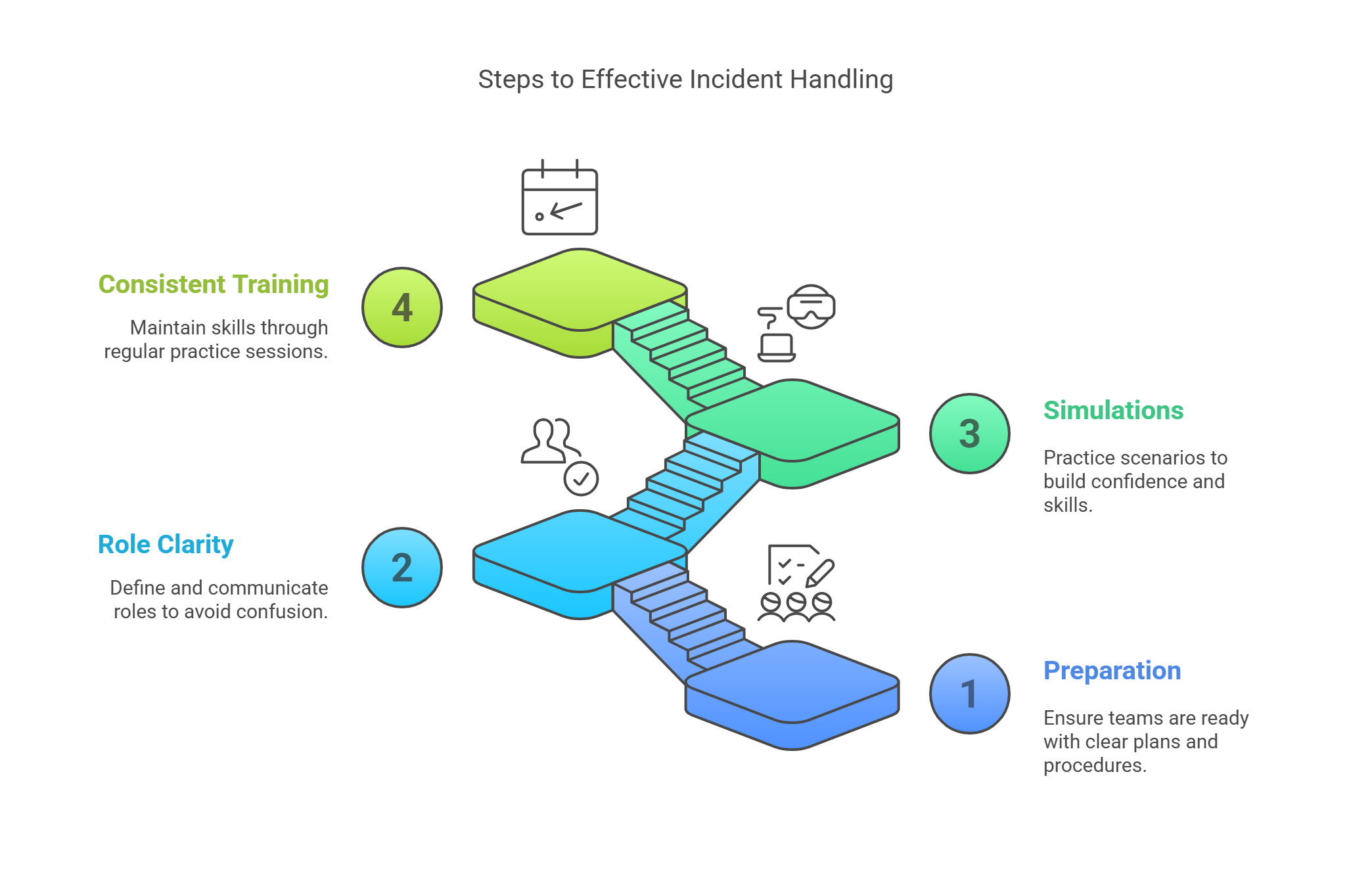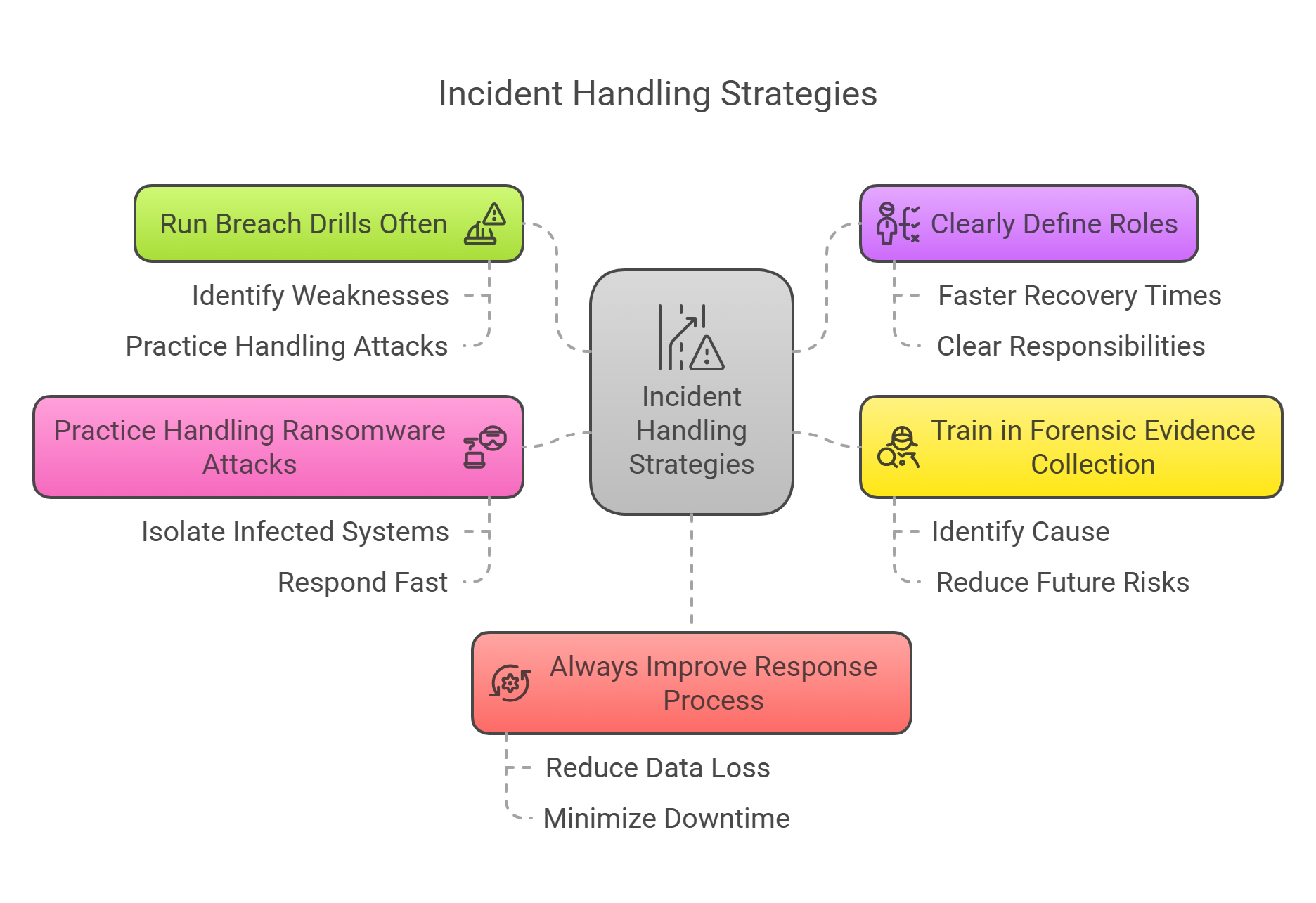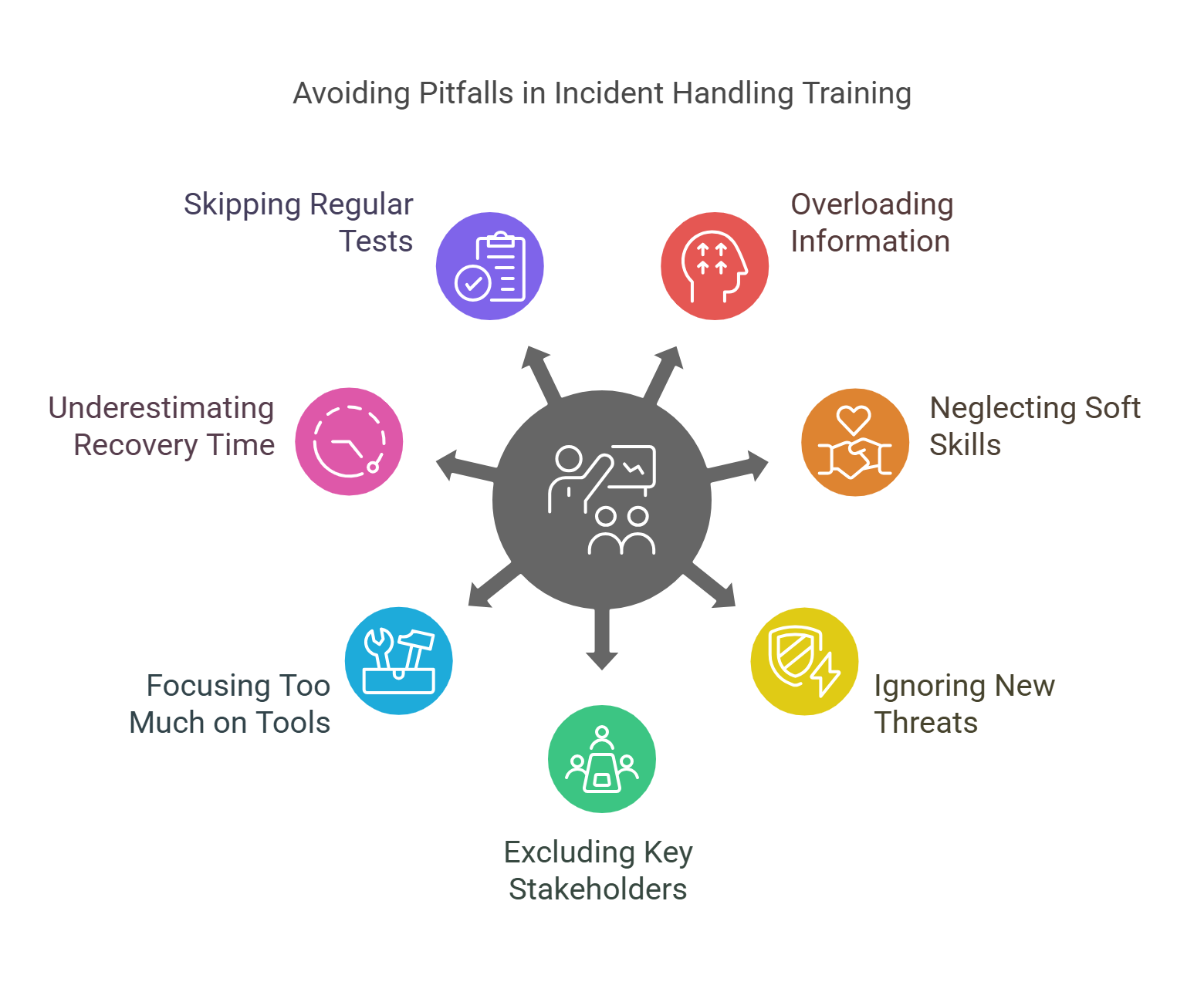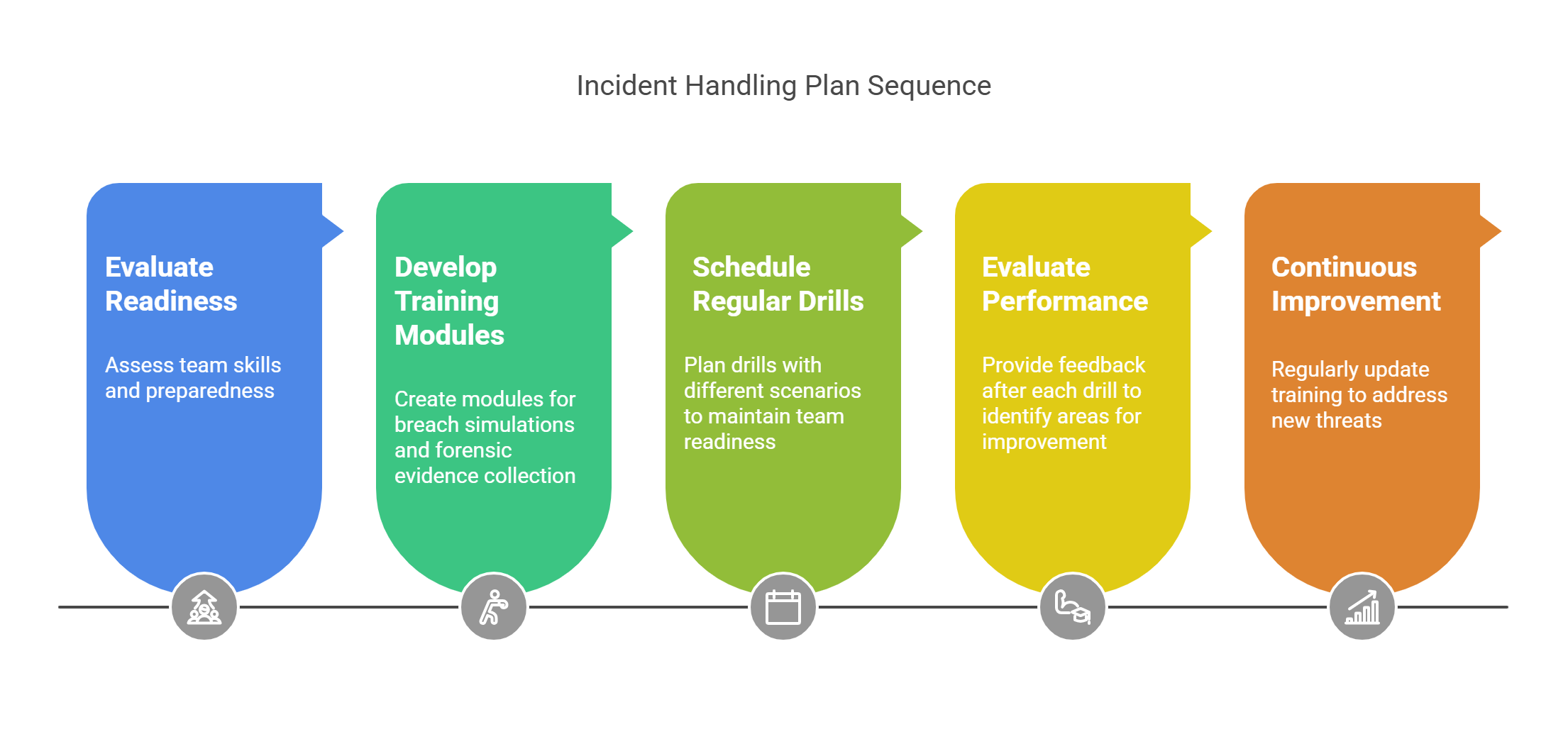What Is Incident Handling Training? Common Mistakes Beginners Make
Many businesses don’t take incident handling seriously until it’s too late. By the time a breach happens, it’s already causing damage. Here are some common mistakes:
- No Preparation: Teams often think they can figure it out during a crisis. Training makes sure everyone knows exactly what to do.
- Unclear Roles: Communication is key. If people don’t know their roles, things slow down, and the damage grows.
- Skipping Simulations: Without practicing real-life security breach scenarios, teams are unprepared.
- Inconsistent Training: One training session isn’t enough. Regular practice ensures your team stays sharp.

5 Proven Incident Handling Strategies for 2025
- Run Breach Drills Often
A 2024 study found that companies that run regular breach drills cut recovery time by 40%. These simulations help teams identify weaknesses and practice handling real-world attacks. - Clearly Define Roles for Your Team
A 2023 survey found that 62% of companies with unclear roles had slower recovery times. Clear roles help everyone know what to do in a crisis. - Train in Forensic Evidence Collection
Cyber Defense Magazine found that incidents with proper forensic training were 30% more likely to identify the cause. This helps reduce future risks and meets legal requirements. - Practice Handling Ransomware Attacks
The 2022 Global Risk Report found that 52% of companies had dealt with ransomware. Simulating these attacks teaches teams how to isolate infected systems and respond fast. - Always Improve Your Response Process
Forrester Research (2023) emphasizes that improving your incident response process is key. By analyzing and adjusting regularly, your team can reduce data loss and downtime quickly.

How ABC Corp. Improved Recovery Time by 50% in 3 Months
ABC Corp. reduced recovery time by 50% in just three months. After implementing incident handling training, including breach simulations, role clarifications, and ransomware drills, they saved millions by speeding up recovery.
7 Hidden Dangers of Incident Handling Training You Must Avoid
- Overloading Information: Don’t try to teach everything in one session. Break it into smaller, focused modules.
- Neglecting Soft Skills: Decision-making, communication, and stress management matter in a crisis.
- Ignoring New Threats: Keep training up-to-date with the latest threats and attack tactics.
- Excluding Key Stakeholders: Legal, PR, and HR teams should also be trained—they play critical roles in an incident.
- Focusing Too Much on Tools: It’s not just about tools. It’s about quick decision-making and coordination.
- Underestimating Recovery Time: Make sure your team knows how to restore systems quickly.
- Skipping Regular Tests: Regularly simulate real-world incidents to keep the team prepared.

What’s Next for Incident Handling in 2025?
AI tools and machine learning will play a bigger role in incident handling. These tools will help teams detect and respond to threats faster. Cross-department collaboration, especially between IT, legal, and PR teams, will grow. As cyber threats increase, regular updates and ongoing training will become even more critical.
FAQs
- What is incident handling training?
It’s training that involves practicing breach simulations, defining roles, forensic evidence collection, and ransomware drills. - How often should teams train?
Teams should practice at least once every three months to stay prepared. - How do I run ransomware drills?
Simulate a live ransomware attack, isolate infected systems, and follow the response protocols. - Why is forensic evidence important in training?
Forensic evidence training ensures teams preserve and document evidence properly, meeting legal requirements.
Your Incident Handling Plan
- Evaluate Readiness: Assess your team’s skills and preparedness.
- Develop Training Modules: Focus on breach simulations, ransomware drills, and forensic evidence collection.
- Schedule Regular Drills: Use different scenarios to keep the team sharp.
- Evaluate Performance: Give feedback after each drill to improve.
- Continuous Improvement: Regularly update training to reflect new threats.

Conclusion
Incident handling training is essential for cybersecurity. Preparing your team today ensures they can respond quickly and effectively when a crisis happens. Keep practicing and updating your plans, and your team will be ready when it counts most.


